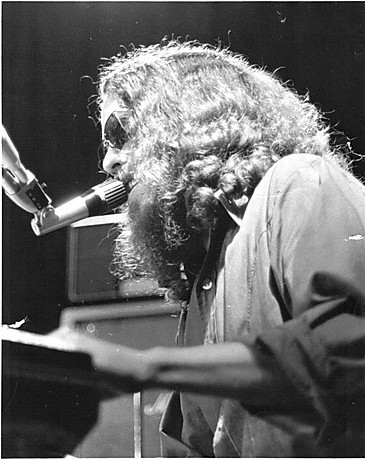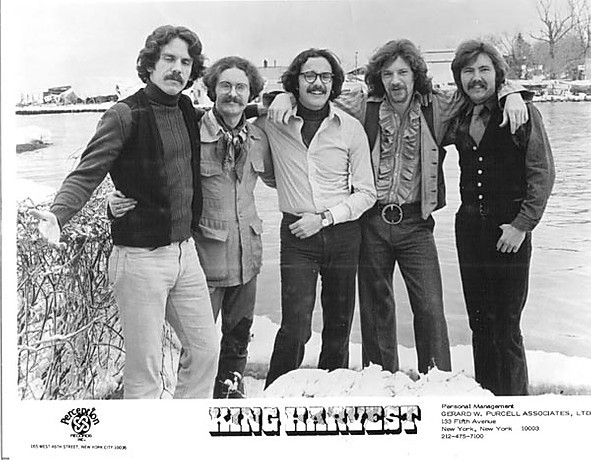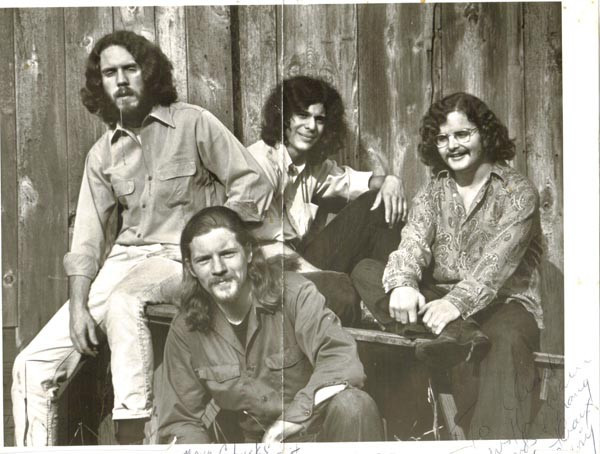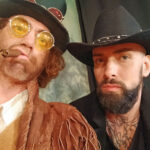The anticipation for a live concert is a unique kind of excitement. Recently, I was eagerly awaiting a triple bill featuring Pure Prairie League, Poco, and Orleans, a lineup promising a night of classic sounds. However, the global pandemic put those plans on hold, leaving the future of live music uncertain. In the lead-up to the would-be concert date, I found myself revisiting YouTube videos of these bands, particularly drawn to Orleans’ rendition of a song that has resonated with me for decades: “Dancing in the Moonlight,” originally by King Harvest.
This iconic track, penned by Sherman Kelly, has been a personal favorite since its release in the 1970s. “Dancing in the Moonlight” by King Harvest officially hit airwaves on July 9, 1972, quickly climbing the charts and securing a place in music history. It peaked at No. 10 on the Cash Box Top 100, No. 13 on the Billboard Hot 100, and No. 22 on the Billboard Easy Listening chart, solidifying its status as a feel-good anthem of the era. While browsing comments on an Orleans YouTube video of the song, I was surprised to find a comment from Sherman Kelly himself, posted just months prior. This discovery sparked an immediate thought: could I reach out to Sherman Kelly and delve into the real story behind “Dancing in the Moonlight”? Fortunately, I did, and the narrative behind this beloved song is more extraordinary than I could have imagined.
From Paradise to Peril: The Dark Inspiration Behind the Dreamy Melody
The genesis of “Dancing in the Moonlight” is far removed from the song’s upbeat and carefree vibe. In 1969, Sherman Kelly and friends were running a nightclub in the idyllic St. Thomas, Virgin Islands. Seeking a day trip, they chartered a yacht to St. Croix. Unbeknownst to Kelly, he was susceptible to seasickness, and the voyage became deeply unpleasant for him and his girlfriend.
Upon reaching St. Croix, the group went ashore for dinner. However, Kelly and his girlfriend were too ill to eat and decided to return to the yacht for the night. Looking back at the harbor, the swaying mast of the boat was enough to deter them, and they opted to find a hotel in town. This is where their troubles truly began. In his seasick haze, Kelly realized he had left his wallet on the yacht, leaving them without funds for accommodation. They approached a small inn, explaining their predicament and promising to settle the bill in the morning. The innkeeper’s response was shocking and predatory: he offered them a room in exchange for Kelly’s girlfriend sleeping with him.
 Sherman Kelly performing live in the 1970s, King Harvest era songwriter
Sherman Kelly performing live in the 1970s, King Harvest era songwriter
Rejected from a second inn, Kelly’s girlfriend suggested they simply sleep on the beach. “It’s a beautiful night. Why don’t we just stretch out on the beach?” she proposed. “So we did,” Kelly recounted. “And that’s all I remember very clearly.” The beautiful night took a terrifying turn. What followed was pieced together from fragmented memories and accounts from others. While sleeping on the beach, Kelly and his girlfriend were brutally attacked by a local street gang. Five men wielding baseball bats viciously beat Kelly. His girlfriend was raped by the gang leader while the others waited their turn. In a moment of desperate resilience, Kelly regained consciousness and fought back, making enough noise to frighten off the attackers.
Battered and disoriented, Kelly and his girlfriend stumbled along the shoreline, guided by distant lights, until they reached the only hospital in St. Croix. They were believed to be among the first victims of the infamous Fountain Valley Gang, who would later, in 1972, commit a mass murder of tourists, devastating St. Croix’s tourism industry for years. Kelly’s condition was critical. “I woke up to the sound of my hospital roommate screaming in pain,” Kelly recalled. “Finally the screaming stopped and I heard two doctors talking about him. ‘That’s it, he’s gone,’ said one doctor about the other patient. ‘What about him, you think he’s gonna make it?’ And the other doctor said, ‘No, I doubt it.’ I realized they were talking about me.”
From Trauma to Melody: Crafting a Dream of Peace
Against the odds, Sherman Kelly survived. After days in the St. Croix hospital, he returned to St. Thomas and then to New York, where he underwent further treatment to repair the extensive injuries to his face. Back home in Ithaca, New York, still recovering and enduring constant pain, Kelly was unable to return to performing. However, this period of convalescence became an unexpected catalyst for creativity.
It was during this challenging time that the seeds of “Dancing in the Moonlight” were sown. “I envisioned an alternate reality, the dream of a peaceful and joyous celebration of life,” Kelly explained. “It was just me imagining a better world than the one I had just experienced in St. Croix.” A horrific, life-threatening ordeal became the unlikely inspiration for a song that radiates joy and escapism. “It was amazing. People liked the song right from the start. I liked it, but I wouldn’t have predicted that it would become a big hit,” Kelly admitted.
 King Harvest band members in 1972, the year 'Dancing in the Moonlight' became a hit
King Harvest band members in 1972, the year 'Dancing in the Moonlight' became a hit
The Song’s Journey to the Charts: Boffalongo and King Harvest
King Harvest was not the first band to record “Dancing in the Moonlight.” In 1970, Kelly joined Boffalongo, a band that included his brother Wells Kelly, Larry Hoppen, Dave “Doc” Robinson, and Peter Giansante. “Dancing in the Moonlight” appeared on Boffalongo’s 1970 album “Beyond Your Head,” featuring Sherman Kelly on lead vocals. Despite its early iteration, Kelly is self-deprecating about his vocal performance on the Boffalongo version. He recounts a disastrous studio experience where producers encouraged him to use cocaine, resulting in a distorted and strained vocal take. Despite this, the Boffalongo version gained regional popularity. Another group, High Broom, also recorded the song in 1970 on Island Records, but it failed to chart.
When Boffalongo disbanded, Wells Kelly joined King Harvest, a French-American group based in Paris, which also included former Boffalongo member Doc Robinson as lead singer. Wells Kelly introduced “Dancing in the Moonlight” to King Harvest. Their version, featuring Robinson on lead vocals, was released as a single and became the hit we know today.
King Harvest’s Hit and Beyond: Touring and Enduring Legacy
Once “Dancing in the Moonlight” became a national hit, King Harvest invited Sherman Kelly to tour with them in the summer of 1972. During live performances, Robinson handled the lead vocals while Sherman Kelly provided harmonies. “Doc had a pretty good voice, better than mine,” Kelly acknowledged. He humorously recalled a critic’s comment: “‘As a singer, Sherman Kelly is not too bad of a songwriter.'” Despite the success and excitement, the touring life wasn’t for Kelly. His stint with King Harvest lasted only for that one tour. “Imagine yourself in your twenties and you’ve written a hit song, you have some chart action and you’re traveling around. It was fun for a while,” he said. “But life on the road is ridiculous. I didn’t really care for it after awhile.”
 Boffalongo band circa 1970, Sherman Kelly's first band to record 'Dancing in the Moonlight'
Boffalongo band circa 1970, Sherman Kelly's first band to record 'Dancing in the Moonlight'
Wells Kelly later left King Harvest and reunited with John Hall, with whom he had played in Thunderfrog in the late 1960s. Together with Larry Hoppen, they formed Orleans. Orleans also recorded “Dancing in the Moonlight,” further cementing the song’s legacy. The current iteration of Orleans, which still includes John Hall and Larry Hoppen’s brothers, continues to perform “Dancing in the Moonlight” in their sets, keeping the song alive for new generations. Larry Hoppen passed away in 2012, but his musical contributions endure.
Sherman Kelly himself pursued diverse paths after his brief touring experience. A graduate of Cornell University with degrees in psychology and English, he furthered his studies in Paris, Switzerland, and New York City before his songwriting success. Following the tragic death of his brother Wells in 1984, Sherman Kelly stepped away from the music industry and earned a master’s degree in social work and psychotherapy. He worked as a psychotherapist for many years until his retirement. In 2008, he released a solo album, “Burnin’ the Candle,” featuring collaborations with his late brother. The timeless appeal of “Dancing in the Moonlight” continued into the 21st century. In 2000, Toploader’s cover of the song became another hit, introducing it to a new audience. The song has also been featured in films, television shows, and video games, including “Guardians of the Galaxy: The Telltale Signs” in 2017.
A Song’s Enduring Light
From its dark and traumatic origins to its widespread popularity and enduring appeal, the story of “Dancing in the Moonlight” is a testament to the power of music to transform personal pain into universal joy. Sherman Kelly’s vision of “a peaceful and joyous celebration of life,” born from a nightmare, continues to resonate with listeners decades later, proving that even from darkness, light and enduring beauty can emerge.

